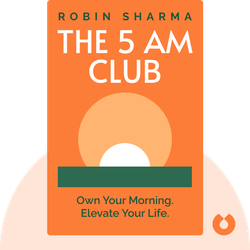Try Blinkist to get the key ideas from 7,000+ bestselling nonfiction titles and podcasts. Listen or read in just 15 minutes.
Start your free trial
Blink 3 of 8 - The 5 AM Club
by Robin Sharma

The Making of Modern South Africa
"The Making of Modern South Africa" by Nigel Worden explores the complex history and evolution of South Africa, from colonialism to apartheid to democracy. It delves into the political, social, and economic factors that shaped the country and continues to impact it today.
Fifteenth-century Africa was a well-connected place. North Africa’s ports linked local Muslim states to a Mediterranean market, which stretched from Spain to Syria. Then there was East Africa – a vital node in trade networks spanning the entire Indian Ocean.
West Africa’s powerful coastal kingdoms, meanwhile, looked both outward, across the Atlantic Ocean, and inward, into the continent’s vast interior.
There was one exception, though: Africa’s southern tip, a geographical region made up of the modern-day Namibia, Botswana, Lesotho, Swaziland, and South Africa. Though this area is one of the world's oldest sites of continuous human habitation, it developed in relative isolation from the rest of the globe until the seventeenth century.
The area that encompasses modern-day South Africa had been inhabited by our prehuman ancestors for over 2.5 million years, with Homo sapiens first establishing settlements in the region around 125,000 years ago. The San and the Khoikhoi are, arguably, direct descendents of these earliest settlers to the region. And although they’re related, the two groups are distinguished by their pastoral structures: the San were traditionally hunter-gatherers, while the Khoi were herders. Around 500 AD, a third group – also herders – migrated into South Africa from as far north as central and east Africa. They were part of the Bantu-linguistic group – a family of languages distinct from those spoken by the San and Khoi peoples.
Over the centuries, and after settling in the fertile plateaus and in the more mediterranean climates of the coast, both the Khoi and Bantu-linguistic groups embraced agriculture. They formed powerful kingdoms, which controlled these settled regions.
Land was vital to both societies, but they didn’t regard it as private property that could be owned. The real source of wealth was cattle. The larger a ruler’s herd, the more power and prestige he enjoyed. The San, for their part, favored nomadic social structures and shared the understanding that land was not something that should be possessed or controlled by anyone. All three overarching societies respected and understood this view.
And so when European colonists arrived in South Africa in the seventeenth century, the first Africans they met lived in kingdoms built around common land ownership. The settlement of these European colonists would throw that system into crisis.



The Making of Modern South Africa (2012) traces the history of South Africa from the colonial conquests of the eighteenth century to the birth of an inclusive democracy in 1994. Along the way, it unpacks how struggles over land, natural resources, and belonging shaped the country’s development.
The Making of Modern South Africa (2012) gives readers a comprehensive understanding of the historical events and social dynamics that shaped South Africa into the country it is today. Here's why this book is worth reading:
It's highly addictive to get core insights on personally relevant topics without repetition or triviality. Added to that the apps ability to suggest kindred interests opens up a foundation of knowledge.
Great app. Good selection of book summaries you can read or listen to while commuting. Instead of scrolling through your social media news feed, this is a much better way to spend your spare time in my opinion.
Life changing. The concept of being able to grasp a book's main point in such a short time truly opens multiple opportunities to grow every area of your life at a faster rate.
Great app. Addicting. Perfect for wait times, morning coffee, evening before bed. Extremely well written, thorough, easy to use.
Try Blinkist to get the key ideas from 7,000+ bestselling nonfiction titles and podcasts. Listen or read in just 15 minutes.
Start your free trial
Blink 3 of 8 - The 5 AM Club
by Robin Sharma
What is the main message of The Making of Modern South Africa?
The main message of The Making of Modern South Africa is an exploration of the complex history and struggle for freedom in South Africa.
How long does it take to read The Making of Modern South Africa?
The reading time for The Making of Modern South Africa varies, but it typically takes several hours. The Blinkist summary can be read in just a few minutes.
Is The Making of Modern South Africa a good book? Is it worth reading?
The Making of Modern South Africa is a worthwhile read for anyone interested in the history and development of South Africa. It offers valuable insights and analysis.
Who is the author of The Making of Modern South Africa?
The author of The Making of Modern South Africa is Nigel Worden.